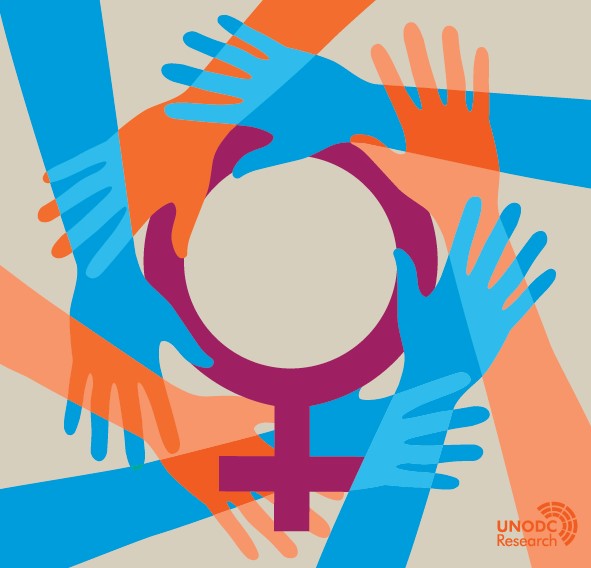Gender-related killings of women and girls (femicide/feminicide)

Gender-related killings of women and girls (femicide/feminicide)
Global estimates of gender-related killings of women and girls in the private sphere in 2021 Improving data to improve responses
Key Findings
- Globally, an estimated 81,100 women and girls were killed intentionally in 2021. The overall number of female homicides has remained largely unchanged over the past decade.
- Most killings of women and girls are gender motivated. In 2021, around 45,000 women and girls world-wide were killed by their intimate partners or other family members. This means that, on average, more than five women or girls are killed every hour by someone in their own family.
- While the overwhelming majority of homicides worldwide are committed against men and boys (81%), women and girls are disproportionately affected by homicidal violence in the private sphere. Approxi-mately 56% of all female homicides are committed by intimate partners or other family members, while only 11% of all male homicides are perpetrated in the private sphere.
- Estimating the global number of gender-related killings of women and girls is challenging and data gaps persist: Of the estimated 81,100 female homicides in 2021, roughly four in ten have no contextual information to allow them to be identified and counted as gender-related killings (femicide/feminicide). Data on gender-related killings committed in the public sphere are particularly scarce, making it diffi-cult to inform prevention policies for these types of killings.
- Between 2010 and 2021, Europe witnessed an average reduction in the number of female intimate partner/family-related homicides (by -19%), albeit with differences across sub-regions and with signs of trend reversals since 2020 in some sub-regions such as Western and Southern Europe. By contrast, the Americas recorded an average increase over the same period (by 6%), with the South American sub-region notably moving in the opposite direction. Limited data availability means that the estima-tion of over-time trends is not possible in Africa, Asia, and Oceania.
- In Northern America, and to a lesser extent in Western and Southern Europe, the year 2020 was par-ticularly deadly in terms of gender-related killings of women and girls in the private sphere. This may point to a pernicious impact of Covid-19 confinement measures on lethal violence in the private sphere, although other contributing factors cannot be ruled out. Other sub-regions in Europe and the Americas recorded negligible changes or decreases in the number of killings between 2019 and the end of 2020, which suggests that the onset of the Covid-19 pandemic had heterogeneous impacts. The decreases in some sub-regions may reflect delays in recording due to Covid-19 rather than reductions in the num-ber of killings.
- Disaggregated trend data from 25 countries in Europe and the Americas indicate that increases in female homicides in the private sphere at the onset of the Covid-19 pandemic were driven primarily by increases in killings perpetrated by family members other than intimate partners. The increases in female family-related homicides at the onset of the Covid-19 pandemic were larger than any yearly variations observed since 2015.
View the complete Gender-related killings of women and girls (femicide/feminicide) Research Brief
View the Official Commemoration of the International day...
